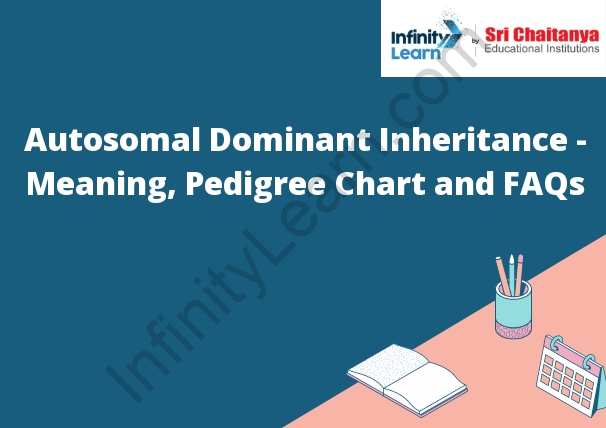Table of Contents
Autosomal Dominant Meaning
An autosomal dominant trait is a genetic trait that is expressed when only one copy of the gene is present. This means that a person only needs to inherit one copy of the gene from one parent in order to have the trait. Autosomal dominant traits are usually expressed in males and females equally.
Autosomal recessive traits are a genetic trait that is only expressed when two copies of the gene are present. This means that a person must inherit two copies of the gene, one from each parent, in order to have the trait. Autosomal recessive traits are usually expressed in males and females equally.

Single-gene
A single-gene disorder is a genetic disorder that is caused by a mutation in a single gene. These disorders are usually rare, and can be passed down from parent to child. They can cause a variety of symptoms, depending on the gene that is mutated.
Examples of single-gene disorders include cystic fibrosis, sickle cell anemia, and Huntington’s disease. These disorders can be diagnosed through genetic testing, and there is currently no cure for them. Treatment is typically focused on managing the symptoms and improving quality of life.
Autosomal Dominant Inheritance
- If one parent has a gene for a dominant disorder, there is a 50% chance that any child they have will inherit the gene. If the child does inherit the gene, they will have the disorder.
- There are a few different ways that a trait can be inherited, including autosomal dominant, autosomal recessive, X-linked, and Y-linked. Of these, autosomal dominant is the most common. This type of inheritance occurs when a gene is located on an autosome, or non-sex chromosome. If a person inherits the dominant gene for a particular trait, they will express the trait. If they inherit the recessive gene, they will not express the trait.
- Autosomal dominant inheritance can be caused by a single dominant gene or by a dominant allele on a gene pair. In some cases, the dominant gene is not expressed unless it is paired with a recessive gene. This is called incomplete dominance. When a dominant gene is not expressed, the trait is said to be recessive.
- Some common traits that are autosomal dominant include Huntington’s disease, achondroplasia, and Marfan syndrome. Each of these conditions is caused by a specific gene that is located on an autosome. Huntington’s disease is caused by a mutation in the Huntingtin gene, achondroplasia is caused by a mutation in the FGFR3 gene, and Marfan syndrome is caused by a mutation in the FBN1 gene.
- Autosomal dominant inheritance is also responsible for some inherited cancer syndromes, including retinoblastoma and Li-Fraumeni syndrome. In these cases, a person inherits a mutated gene from one parent that increases their risk of developing cancer.
- Most cases of autosomal dominant inheritance are caused by a single dominant gene. However, in some cases, the gene can be passed down from one generation to the next in a pattern called multi-generational inheritance. This occurs when a person inherits a dominant gene from a parent who also inherited the gene from their parent. Multi-generational inheritance can be caused by a dominant gene on a single gene pair or by a dominant allele on a gene pair.
Autosomal Recessive Disorders
- In autosomal recessive disorders, the gene for the disorder is located on an autosome (a chromosome other than the sex chromosomes). The disorder is passed from one generation to the next when two copies of the defective gene, one from each parent, are inherited.
- Because the disorder is passed on in this way, it typically affects both males and females equally. However, because males have only one X chromosome, they are more likely to have a disorder if it is recessive and they inherit the defective gene from their mother.
- In autosomal recessive disorders, the symptoms of the disorder usually appear only when two copies of the defective gene are inherited. This is because the normal copy of the gene can usually compensate for the defective gene. However, when there is no normal copy of the gene, the disorder will be expressed.
X Linked Dominant Inheritance
X linked dominant inheritance is a type of genetic inheritance in which the gene responsible for a particular trait is located on the X chromosome. This type of inheritance is typically seen in males, who only have one X chromosome, and can be passed on to their sons. Females, who have two X chromosomes, can only pass the gene on to their daughters if it is located on one of their X chromosomes.
X-linked Recessive
X-linked recessive inheritance occurs when a gene is located on the X chromosome. Females have two X chromosomes, while males have one X and one Y chromosome. A recessive gene on the X chromosome will be expressed in a female if she has only one copy of the gene (because she has two X chromosomes, one of which carries the gene). A recessive gene on the X chromosome will not be expressed in a male, because he has only one X chromosome and the gene is masked by the dominant gene on his Y chromosome.
Y-linked inheritance
One example of Y-linked inheritance is the ability of a male to produce offspring with a red fur gene. The gene is passed from father to son on the Y chromosome. Females cannot pass on the gene, because they do not have a Y chromosome.









